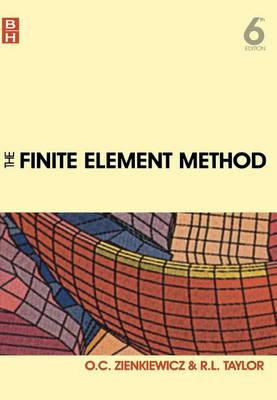The Finite Element Method
1 primary work • 4 total works
Book 1
In the years since the publication of the previous edition, active research has developed the finite element method into a tool for the modelling of physical systems. This new edition maintains the comprehensive style of the earlier editions and incorporates contemporary research and development from this field. Expanded to three volumes, the book now covers the basis of the method and its application to advanced solid mechanics and also advanced fluid dynamics. This first volume addresses the basis of the finite element method. Aimed at undergraduate and postgraduate students, it provides a complete introduction to the method, offering new material on recovery, accuracy, error estimates and adaptivity. This edition also features increased coverage of mixed and hybrid methods including the discontinuous Galerkin and enhanced strain methods, an expanded chapter on incompressible behaviour and stabilization procedures, and updated coverage of meshless (element free) methods.
This title covers the basis of the method and its application to advanced solid mechanics and is intended for readers studying structural mechanics. It incorporates information on concepts necessary to model behaviour, such as viscoelasticity, plasticity and creep as well as shells and plates. There is also coverage of interpolation methods for shell and plate formations and material on non-linear geometry, stability and buckling of structures and large deformations.
The Finite Element Method for Solid and Structural Mechanics
by O C Zienkiewicz and Robert L. Taylor
Published 1 January 2005
This is the key text and reference for engineers, researchers and senior students dealing with the analysis and modelling of structures - from large civil engineering projects such as dams, to aircraft structures, through to small engineered components. Covering small and large deformation behaviour of solids and structures, it is an essential book for engineers and mathematicians. The new edition is a complete solids and structures text and reference in its own right and forms part of the world-renowned Finite Element Method series by Zienkiewicz and Taylor.
New material in this edition includes separate coverage of solid continua and structural theories of rods, plates and shells; extended coverage of plasticity (isotropic and anisotropic); node-to-surface and 'mortar' method treatments; problems involving solids and rigid and pseudo-rigid bodies; and multi-scale modelling.
New material in this edition includes separate coverage of solid continua and structural theories of rods, plates and shells; extended coverage of plasticity (isotropic and anisotropic); node-to-surface and 'mortar' method treatments; problems involving solids and rigid and pseudo-rigid bodies; and multi-scale modelling.
Finite Element Method: Its Basis and Fundamentals
by O C Zienkiewicz, RL Taylor, J. Z. Zhu, Olek C. Zienkiewicz, and Robert L. Taylor
Published 26 May 2005
The Sixth Edition of this influential best-selling book delivers the most up-to-date and comprehensive text and reference yet on the basis of the finite element method (FEM) for all engineers and mathematicians. Since the appearance of the first edition 38 years ago, The Finite Element Method provides arguably the most authoritative introductory text to the method, covering the latest developments and approaches in this dynamic subject, and is amply supplemented by exercises, worked solutions and computer algorithms.
* The classic FEM text, written by the subject's leading authors
* Enhancements include more worked examples and exercises
* With a new chapter on automatic mesh generation and added materials on shape function development and the use of higher order elements in solving elasticity and field problems
Active research has shaped The Finite Element Method into the pre-eminent tool for the modelling of physical systems. It maintains the comprehensive style of earlier editions, while presenting the systematic development for the solution of problems modelled by linear differential equations.
Together with the second and third self-contained volumes (0750663219 and 0750663227), The Finite Element Method Set (0750664312) provides a formidable resource covering the theory and the application of FEM, including the basis of the method, its application to advanced solid and structural mechanics and to computational fluid dynamics.
* The classic FEM text, written by the subject's leading authors
* Enhancements include more worked examples and exercises
* With a new chapter on automatic mesh generation and added materials on shape function development and the use of higher order elements in solving elasticity and field problems
Active research has shaped The Finite Element Method into the pre-eminent tool for the modelling of physical systems. It maintains the comprehensive style of earlier editions, while presenting the systematic development for the solution of problems modelled by linear differential equations.
Together with the second and third self-contained volumes (0750663219 and 0750663227), The Finite Element Method Set (0750664312) provides a formidable resource covering the theory and the application of FEM, including the basis of the method, its application to advanced solid and structural mechanics and to computational fluid dynamics.

